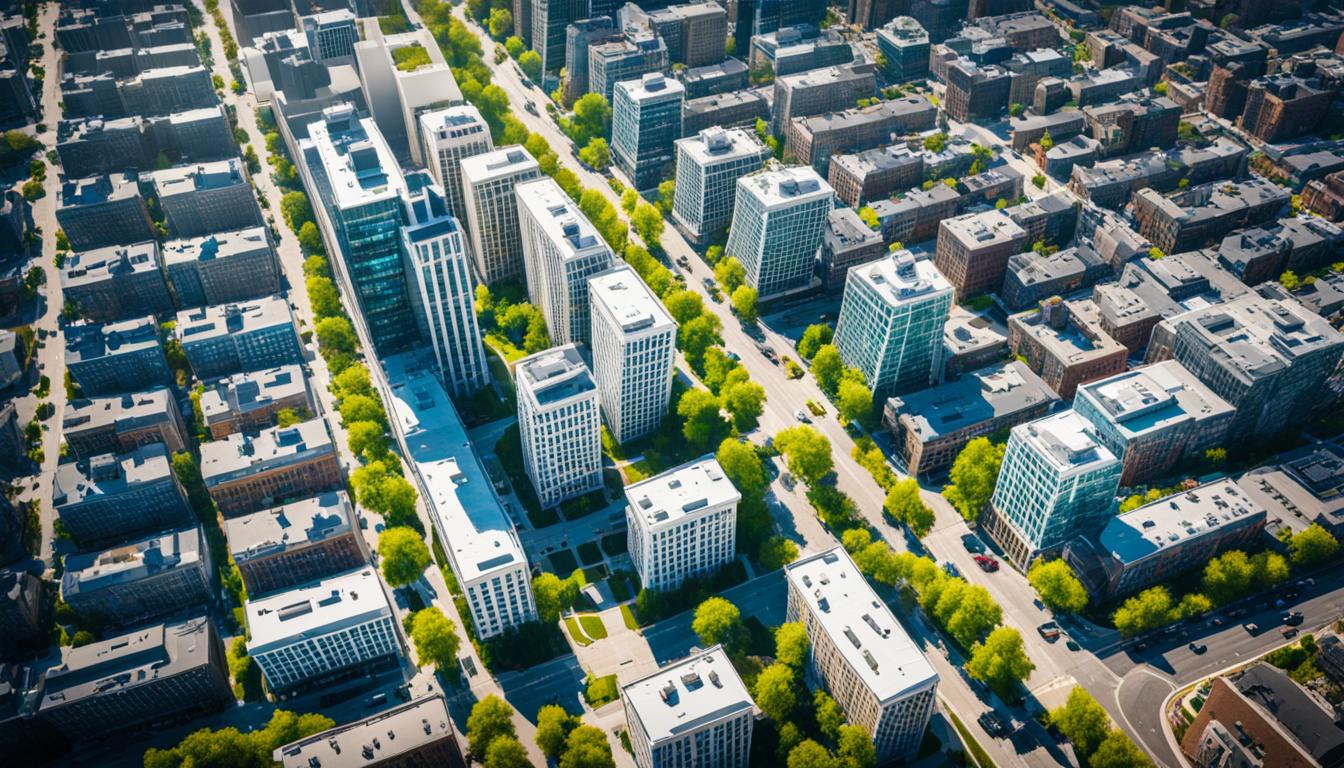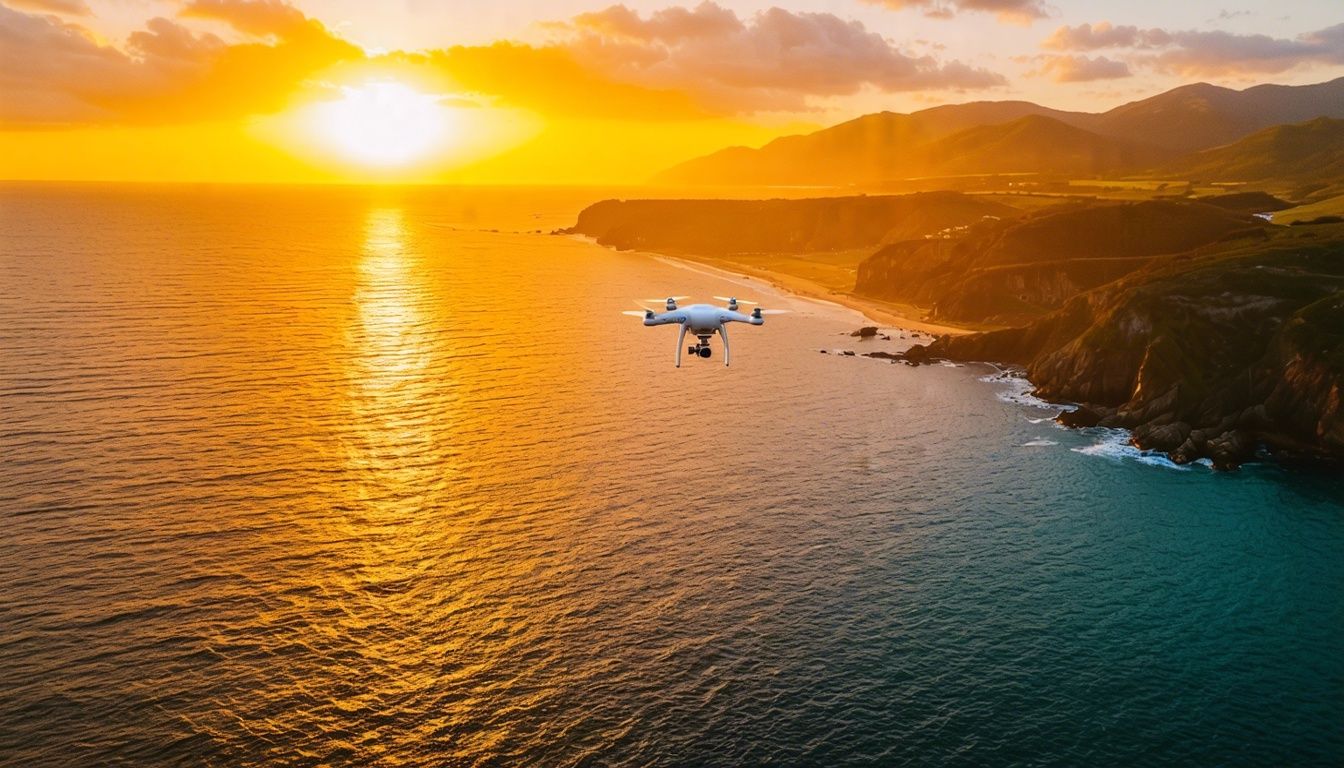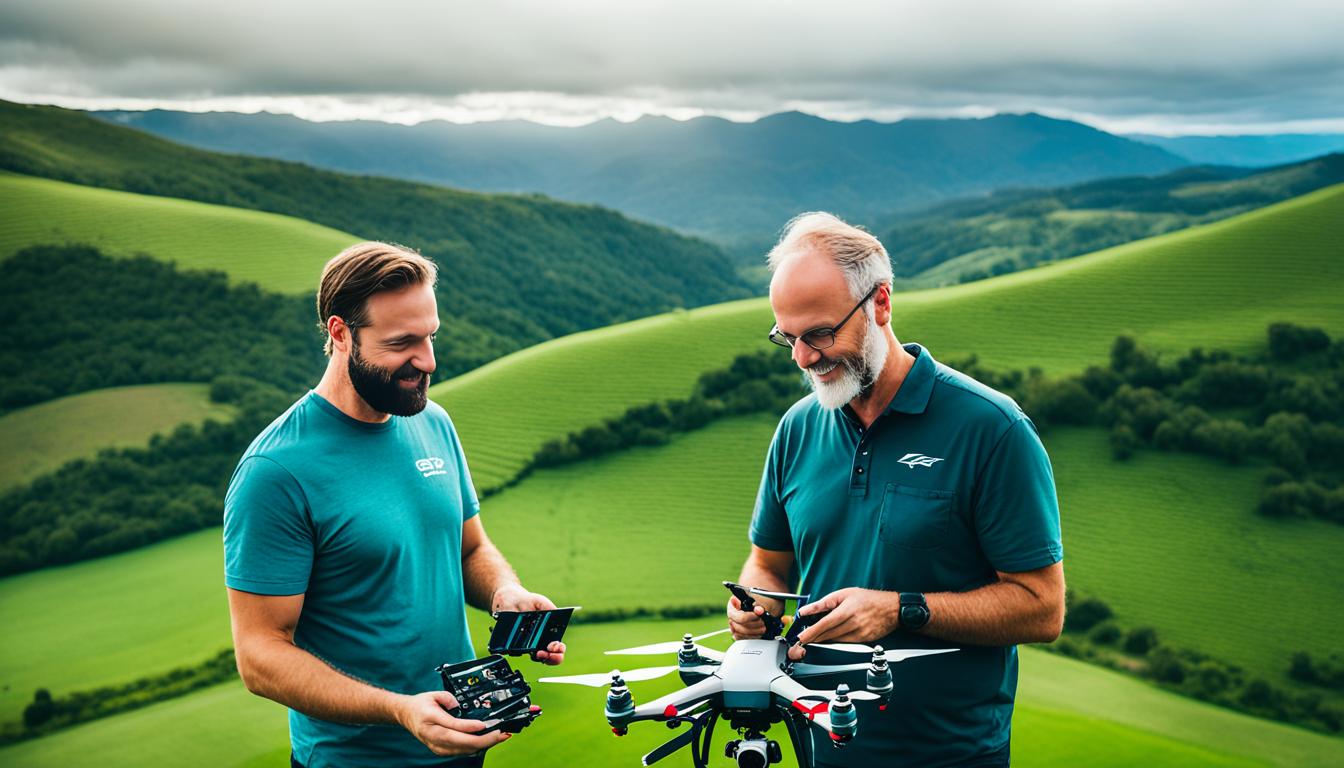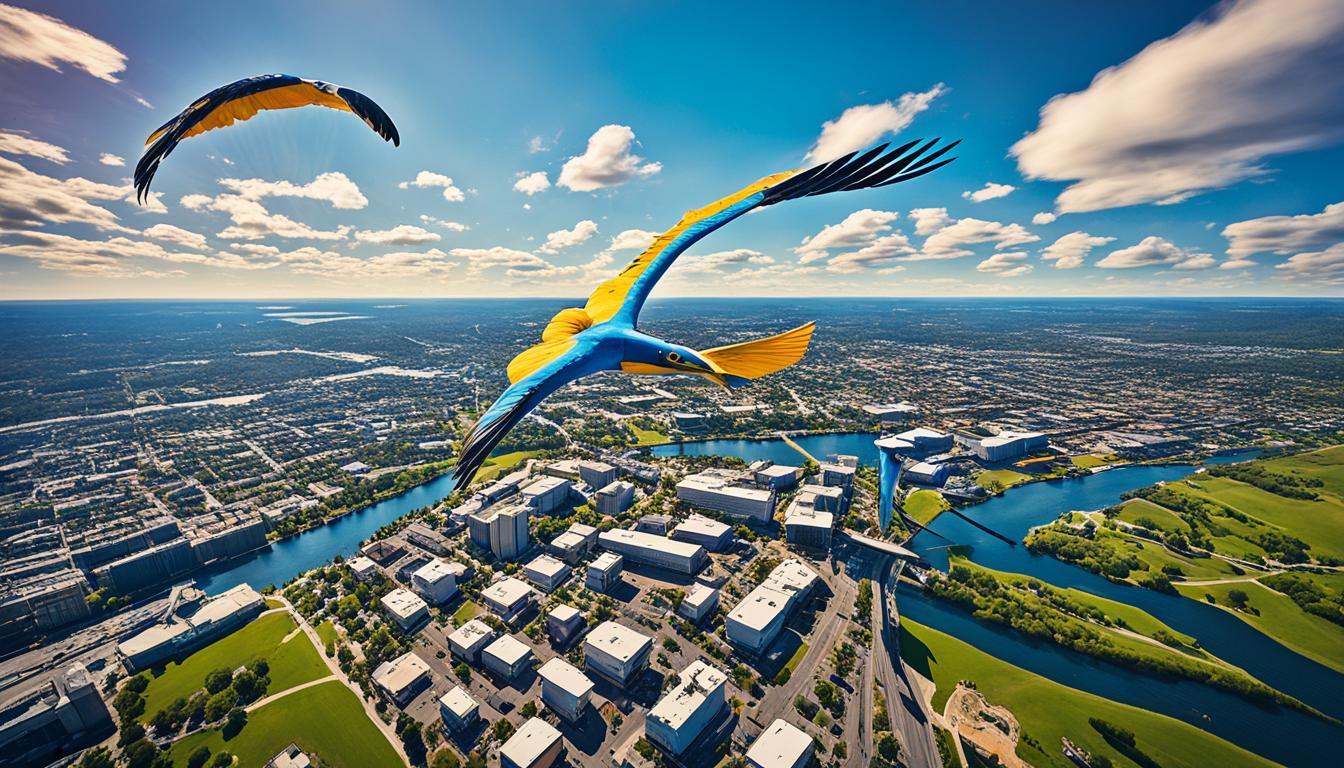Drone photography has completely revolutionized the way we capture images and videos, allowing us to elevate our view and capture stunning aerial perspectives of urban environments. Whether you are a professional photographer, a business owner looking to showcase your cityscape, or simply a photography enthusiast, urban drone photography opens up a world of creative possibilities.
From capturing breathtaking cityscape aerial images and high-quality city drone footage to providing professional drone services for urban landscape shots and marketing purposes, the potential of urban drone photography is vast. However, mastering the art of drone photography in urban environments requires both technical skill and creative vision.
In this article, we will explore essential tips and techniques to help you take your urban drone photography skills to new heights. From understanding the basics of drone photography and navigating the regulations to utilizing different angles and perspectives and post-processing your images, we’ve got you covered.
Key Takeaways:
- Master the basics of drone photography, including equipment selection and understanding regulations.
- Experiment with different angles and perspectives to capture unique and engaging urban drone shots.
- Explore different types of urban drone photography, such as landscape, cityscape, and wildlife.
- Learn post-processing techniques to enhance the quality and creativity of your aerial images.
- Always prioritize legal and safety considerations when engaging in drone photography.
Understanding Drone Photography Basics
Drone photography is an exciting and dynamic field that allows us to capture breathtaking aerial images. However, mastering drone photography goes beyond just flying a drone and taking pictures. It requires a solid understanding of the basics, including the equipment, regulations, and photography techniques. In this section, we will delve into the essential aspects of drone photography that every aspiring drone photographer should know.
The Right Equipment for the Job
When starting with drone photography, it’s crucial to choose the right equipment that suits your needs and budget. There is a wide range of drones available in the market, each with different features and capabilities. Consider factors such as flight time, camera quality, stability, and portability when selecting a drone. Additionally, investing in accessories like spare batteries, memory cards, and a drone backpack can enhance your overall experience.
Understanding Drone Regulations
Flying drones comes with set regulations that ensure safety and privacy. Familiarize yourself with the drone regulations set by the Civil Aviation Authority (CAA) or relevant governing bodies in your country. These regulations dictate where and how high you can fly a drone, as well as any necessary permits or certifications you may require. Adhering to these regulations not only keeps you out of legal trouble but also helps maintain safety for yourself and others.
Mastering Drone Photography Techniques
No matter how advanced your equipment is, understanding photography techniques is key to capturing stunning aerial images. Composition, exposure, and focus are some of the essential skills you need to develop. Experiment with different compositions, such as leading lines, rule of thirds, and symmetry, to add visual interest to your photos. Explore exposure settings to achieve balanced lighting, and practice focusing techniques to ensure crisp and sharp images.
“Drone photography is more than just flying a drone and capturing images; it’s about understanding the equipment and regulations while utilizing photography techniques to create stunning aerial visuals.” – John Smith, Professional Drone Photographer
By familiarizing yourself with drone photography basics, you’ll be well-equipped to embark on your aerial photography journey. Whether you’re capturing stunning landscapes, architectural wonders, or unique perspectives of cityscapes, having a solid understanding of the basics will elevate your drone photography skills to new heights.
| Drone Photography Basics | Drone Equipment | Drone Regulations | Drone Photography Techniques |
|---|---|---|---|
| Choose the right drone and accessories | Consider flight time, camera quality, stability, and portability | Familiarize yourself with regulations set by the Civil Aviation Authority | Master composition, exposure, and focus techniques |
| Invest in spare batteries, memory cards, and a drone backpack | Understand where and how high you can fly | Adhere to regulations to ensure safety and privacy | Experiment with different compositions and lighting |
| Learn about essential photography techniques | Enhance your overall drone photography experience | Obtain necessary certifications or permits, if required | Practice focusing techniques for sharp images |
Utilizing Different Angles and Perspectives
One of the advantages of drone photography is the ability to capture unique angles and perspectives.
Experimenting with different heights, orientations, and movements can help you find the perfect vantage point to showcase your subject. By changing the drone’s height, you can capture different views of the landscape, whether it’s a broader cityscape or an intimate shot from a lower altitude.
Tilting the camera and exploring different positions relative to the subject can create more dynamic and interesting compositions. Utilizing the drone’s movement capabilities, such as flying in a circular motion or a straight line, can create panoramic views or dramatic effects.
By exploring different angles and perspectives, you can elevate your drone photography and create engaging and visually appealing images.

| Drone Movement Techniques | Advantages |
|---|---|
| Flying in circular motion | Creates a panoramic view |
| Flying in a straight line | Produces dramatic effects |
| Changing altitude | Captures different perspectives |
| Tilting the camera | Enhances composition |
Exploring Different Types of Drone Photography
Drone photography opens up a world of possibilities for capturing stunning images across different genres. Whether you’re drawn to the natural beauty of landscapes, the architectural wonders of cityscapes, or the captivating wildlife in their natural habitats, drones offer a unique perspective that traditional photography simply can’t achieve.
Landscape Drone Photography
Landscape Drone Photography allows you to capture breathtaking views of mountains, valleys, and other natural landscapes from a bird’s-eye perspective. With your drone, you can explore vast expanses and discover hidden details that are often inaccessible from the ground.
When shooting landscapes with your drone, keep an eye out for interesting patterns, textures, and natural elements that can enhance the visual impact of your photos. Utilize the rule of thirds to compose your shots for a balanced and captivating composition. Experiment with different camera angles and heights to find the perfect perspective that showcases the grandeur and beauty of the scenery.
Cityscape Drone Photography
Cityscape Drone Photography offers a fresh and unique way of capturing the urban environment. From soaring skyscrapers to iconic bridges, drones allow you to capture the vibrant energy and architectural marvels of cities.
When photographing cityscapes, pay attention to architectural details and unique landmarks that define the character of the city. Experiment with different camera angles and heights to showcase interesting perspectives and highlight the symmetrical lines and patterns. Take advantage of reflective surfaces, such as water or glass, to add depth and visual interest to your images.
Wildlife Drone Photography
Wildlife Drone Photography provides an incredible opportunity to observe and document animals in their natural habitats without disturbing their behavior. With the ability to fly silently and maintain a safe distance, drones allow you to capture intimate and close-up shots of wildlife without causing any harm or stress.
When photographing wildlife with a drone, it’s crucial to respect the animals’ well-being and follow ethical guidelines. Keep a safe distance to avoid causing stress or disturbance. Consider using a fast shutter speed to freeze the motion and capture crisp details. Experiment with different camera angles and heights to capture unique perspectives and intimate moments between the animals.
| Type of Drone Photography | Key Features |
|---|---|
| Landscape Drone Photography | – Bird’s-eye view of natural landscapes – Capturing interesting patterns and textures – Experimenting with camera angles and heights |
| Cityscape Drone Photography | – Capturing iconic city landmarks – Exploring architectural details – Utilizing reflections for creative compositions |
| Wildlife Drone Photography | – Documenting animals in their natural habitats – Maintaining a safe distance – Experimenting with camera angles to capture intimate moments |
By exploring different types of drone photography, you can expand your creative horizons and capture spectacular images that leave a lasting impression. Remember to always fly safely, follow regulations, and respect the environment and wildlife in your pursuit of the perfect shot.
Post-Processing Techniques
Post-processing is an essential part of drone photography to enhance the quality of your images and add creative effects. There are several techniques and tools you can use to make your aerial photos stand out.
Shooting in RAW Format
When capturing images with your drone, it’s recommended to shoot in RAW format. Unlike JPEG, RAW files preserve more image data, giving you greater flexibility during the editing process. RAW files contain more colors and details, allowing you to make adjustments without sacrificing image quality.
Editing Software for Aerial Images
To process your RAW images, you’ll need editing software like Adobe Lightroom or Capture One. These programs offer powerful tools for adjusting exposure, contrast, color balance, and other key parameters to fine-tune your photos. With a wide range of editing options, you can bring out the full potential of your aerial images.
Adjusting Exposure and Contrast
Proper exposure and contrast are crucial elements in drone photography. By carefully adjusting the exposure, you can ensure that the highlights and shadows are well-balanced, resulting in a well-exposed image. Similarly, tweaking the contrast can help enhance the visual impact of your aerial photos, making them more vibrant and dynamic.
Using Filters
Filters are an excellent tool for adding creative effects to your drone photos. Neutral density (ND) filters can help reduce excessive brightness, allowing you to capture long-exposure shots with smooth motion blur. Graduated ND filters are useful for balancing exposure in scenes with a stark contrast between the sky and the ground. Polarizing filters can reduce glare and enhance color saturation, resulting in more pleasing and saturated images.
Black and White Conversion for Aerial Photos
Converting your aerial photos to black and white can create a dramatic and timeless look. Black and white images often emphasize texture, shapes, and patterns, drawing the viewer’s attention to these elements. Experiment with different tonal adjustments and contrast settings to achieve the desired effect.

Recommended Post-Processing Software for Aerial Images
| Software | Description |
|---|---|
| Adobe Lightroom | A comprehensive editing software with powerful tools for adjusting exposure, contrast, color balance, and more. It also offers advanced features like batch editing and photo organization. |
| Capture One | An industry-leading editing software known for its exceptional image quality and precise color adjustments. It provides a wide range of tools for professional photographers. |
| Luminar | A user-friendly editing software with AI-driven features that simplify complex editing tasks. It offers a variety of presets and filters to enhance your aerial images effectively. |
Legal and Safety Considerations
When engaging in drone photography, it is essential to comply with the necessary legal and safety considerations. Familiarize yourself with the drone photography regulations set by the Federal Aviation Administration (FAA) in the United States. These regulations outline where and when you can fly your drone, as well as the certifications or permits you may need.
Ensure that you practice safe flying practices to protect yourself, others, and your equipment. Always maintain a visual line-of-sight with your drone and avoid flying near other aircraft or crowds. It is important to be cautious of privacy concerns and respect the privacy of individuals when capturing your aerial shots.
Considering the potential risks involved in drone photography, it is wise to obtain drone insurance. Drone insurance provides coverage in case of accidents, property damage, or personal injury. This will help protect your investment and give you peace of mind while pursuing your passion for drone photography.
By following these legal and safety considerations, you can enjoy drone photography responsibly and mitigate any potential risks. Remember to always stay informed about any updates or changes in the regulations to ensure that you are complying with the latest requirements. Happy and safe flying!
FAQ
What is drone photography?
Drone photography is the practice of capturing images and videos using unmanned aerial vehicles, or drones. It allows photographers to take unique aerial shots from different perspectives.
What equipment do I need for drone photography?
To get started with drone photography, you will need a drone and accessories that suit your needs and budget. Additionally, consider investing in editing software and filters for post-processing your images.
Are there any regulations for flying drones?
Yes, you must comply with regulations set by the Civil Aviation Authority (CAA) or the relevant aviation authority in your country. Familiarize yourself with the rules regarding where and how high you can fly your drone.
How can I capture unique angles and perspectives with my drone?
Experiment with changing the drone’s height, orientation, and movements to capture different views of your subject. Tilting the camera and exploring different positions relative to the subject can also create more dynamic compositions.
What types of images can drones capture?
Drones can capture various types of images, including landscapes, cityscapes, and wildlife. Each type requires different techniques and considerations.
How can I enhance my drone images through post-processing?
Shooting in RAW format and using editing software like Adobe Lightroom or Capture One allows you to adjust exposure, contrast, and color balance. Filters can also be used to add creative effects or reduce glare.
What legal and safety considerations should I be aware of?
Familiarize yourself with the regulations set by the aviation authority in your country, practice safe flying practices, and consider obtaining drone insurance. Always prioritize safety and respect privacy concerns.
Are Urban Drone Photography Tips Also Taught in Your Workshops?
Yes, urban drone photography tips are definitely covered in our drone photography workshops. We understand the unique challenges and opportunities that come with capturing cityscapes from above. Our workshops equip you with the skills and knowledge needed to excel in urban drone photography.




